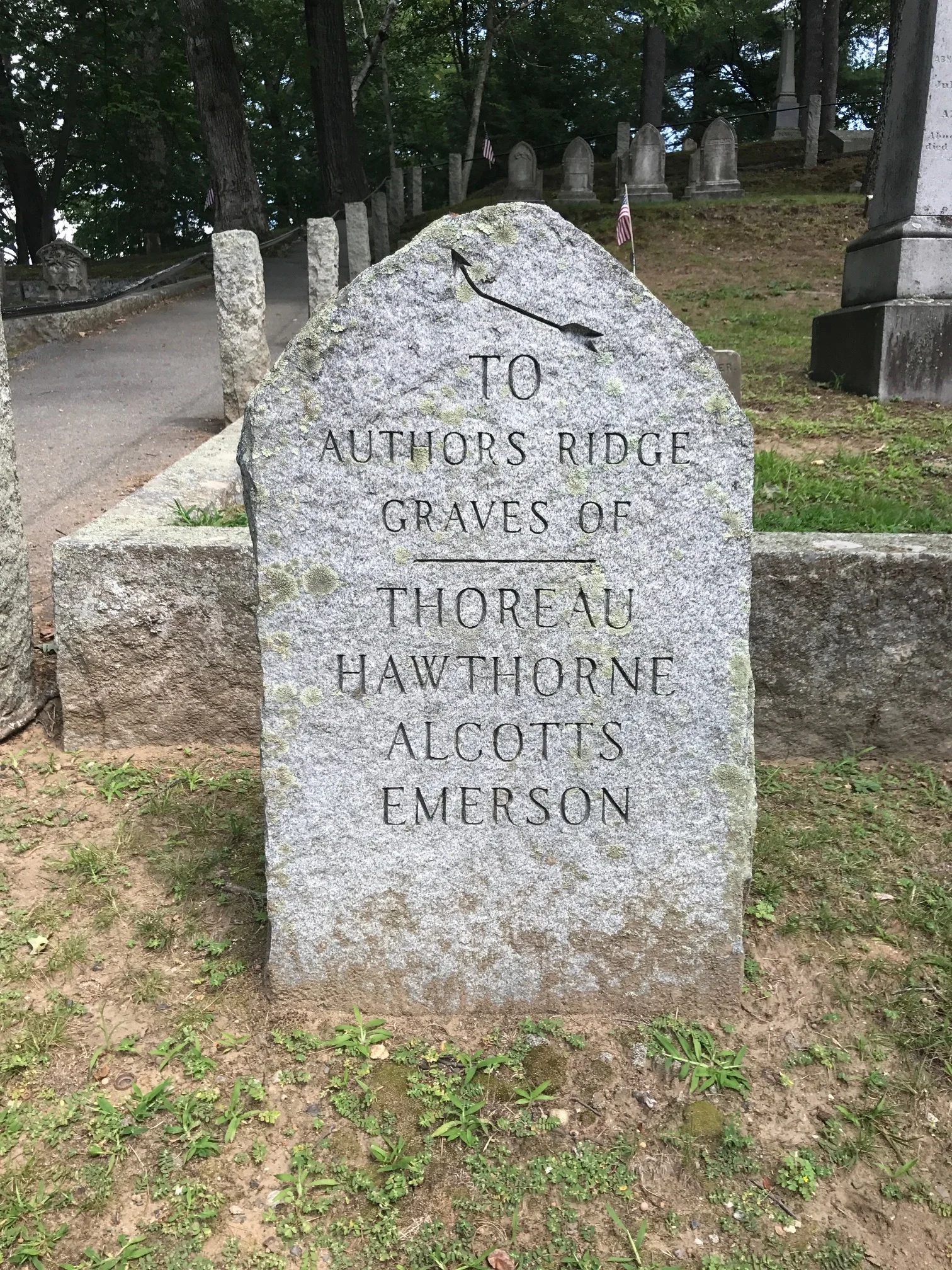Touring Sleepy Hollow Cemetery
With a perfectly sunny summer day and a Sunday with no plans, Mike and I headed over to Concord, Massachusetts to get our history on. Our first stop was Sleepy Hollow Cemetery, in the center of town. Author's Ridge is a loop around the back of the cemetery and the final resting place of a few noteworthy residents.
As you ascend Author's Ridge, the first grave you happen upon is that of Henry David Thoreau, essayist, poet, philosopher, abolitionist, naturalist, tax resister, development critic, surveyor, and historian. He also wrote Walden, based on his experiment of living in the woods in a tiny home before tiny homes became cool and long before reality-documentary television shows about extreme homesteading were a thing. Pics from the trip to Walden are here.
Thoreau died at an extremely young age, just 44. He had been diagnosed with tuberculosis at 17 and struggled with it on and off for most of his life. His health declined even further after he went out late one night without a coat or umbrella, to count tree rings (seriously) and was caught in a sudden downpour. He developed bronchitis after that and never fully recovered. Upon his death bed, his last words were, "Now comes good sailing"
If it weren't for the collection of tokens around his headstone, you'd likely miss Thoreau's grave altogether. It's quite small and understated. Which I guess is rather fitting for a man who raved about minimalism. Thoreau was initially buried in a family plot elsewhere in the cemetery, but after the deaths of his contemporaries, he was relocated at the top of the hill to rejoin his friends.
Directly across from him you'll find his friend, Nathanial Hawthorne.
Hawthorne is most famous for The House of the Seven Gables and The Scarlet Letter. He's also a former resident of Salem, Massachusetts and a direct descendant of Judge Hathorne, the real life judge who presided over the Salem Witch Trials.
After an illustrious literary career, Hawthorne passed away in his sleep at age 59 (said to have been from gastrointestinal cancer). He was discovered later that morning by none other than former president and traveling companion Franklin Pierce. His pallbearers included close friends Henry Wadsworth Longfellow, Ralph Waldo Emerson, and Louisa May Alcott.
Speaking of Louisa May Alcott, she's just a few paces down the path. Alcott was a poet and novelist, most famous for writing Little Women. In addition, she was a feminist advocate and the first woman to register to vote in Concord. Together with her family, she housed fugitive slaves as part of the Underground Railroad prior to the Civil War and served as a Union nurse during, at a hospital in Georgetown. A pretty amazing woman all around.
Louisa May Alcott died from a stroke at age 55, two days after her father's passing. She's buried alongside her family, including her father who was a member of the Transcendental Club along with Henry David Thoreau and Ralph Waldo Emerson.
And that brings us over to Emerson. He's buried with his family around the corner from the Alcotts. Emerson was a poet, author, and abolitionist as well. His most famous work is Nature, the definitive essay on transcendentalism (tl;dr—organized religion corrupts, seek divinity in nature).
Like his transcendentalist BFF Thoreau, Emerson's downfall began with a coatless, hatless nature stroll in the freezing rain. A cold turned into pneumonia which proved too much for a 78-year old man who was already frail to begin with. He passed away at home, was draped in a long white robe, laid out in a jet black coffin, then carried to Sleepy Hollow Cemetery in a horse-drawn carriage to be buried beneath a large rose quartz headstone. The plaque reads, "The passive master lent his hand to the vast soul that over him planned."
After visiting the rest of the cemetery, we headed over to the adjacent Minute Man National Historic Park where American colonists "fired the shot heard round the world" according to Ralph Waldo Emerson's iconic poem, Concord Hymn. More on that visit here!












